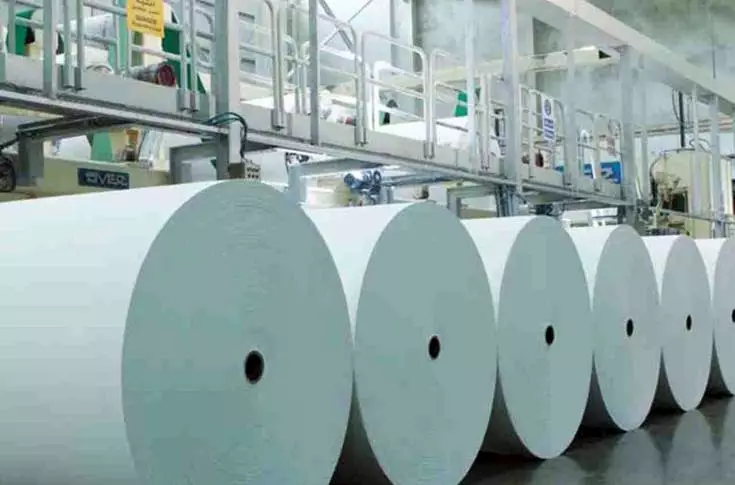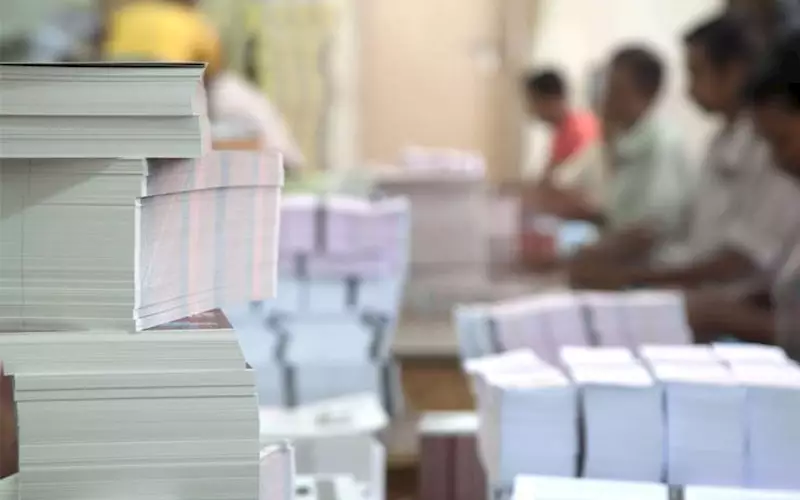Print problems aggravate, as paper prices keep rising
The Indian paper market faces a difficult situation due to extreme under supply and high input costs. The surge in production cost, logistics, chemicals, and raw materials have forced paper mills to increase prices to an all-time high. Kamal Chopra of OPA and president of WPCF in Belgium explains how the industry is coping with the present situation...
07 Mar 2022 | By Kamal Chopra
Print is a crucial part of our daily life. Most citizens rely on printed information. Apart from being a vital sector, the industry and the products it manufactures supports citizens, cultures and education in one way or the other. This support is endangered by the current turmoil in the supply chain.
The printing industry in India supports more than hundred life-dependent activities and sustains information-flow, news industry, entertainment, education, advertising and packaging. Print plays a huge role in everyday life – so much so that it is frequently overlooked. Our sector supplies the packaging for goods at the supermarket, the books, newspapers and the magazines we read. Also, there are the eCommerce boxes, which ensure a 24/7 supply of food, clothing, gadgets and much more.
In the past two years, many paper groups have reduced capacity either by shutting down machines or converting to packaging grades. In all this, the food, pharma and eCommerce markets are delivering growth because of demand for boxes. The inability to print will cause large financial losses. It will dent the balance sheet of the printing company, as well as the final customer. All commodities and input costs have gone up for most types of business and ultimately the end consumers will have to pay for the cost. The big print firms and packaging converters have started informing their customers about the paper crisis ahead, due to the global squeeze on the availability of crucial paper types.
During the past two years, printed products have witnessed a decline and demand is rebounding to pre-pandemic levels. The demand has surged due to “the economy being back on track” and the education sector opening up. Market volatility is at a record high. It has increased due to the war in Ukraine and will cause additional supply problems to produce forest-based products that source their wood or pulp from Russia or the Ukraine.

Chopra: The overnight increase in the prices, without any pre-intimation, may prove to be one more nail in the coffin
Situation much worse than 2020
In 2020, many of the key print dependent sectors were forced to reduce print advertising. These sectors switched to electronic means for their communication. In mid-2021, this market returned to print. Now, the same set of customers are facing surging prices and uncertainty about the supply of paper and board. Consider the stats: Kraft paper, which was available at Rs 28- 30 per kg in January 2021, is now available at Rs 45-48 per kg. Duplex board for cardboard boxes has increased from Rs 35-38 kg to Rs 65-68 per kg. Likewise, the cost of art paper has increased to Rs 105-108 per kg; it was available at Rs 68-70 during the same period.
Industry leaders are saying there will be much more increase in the coming days. Also, the cost will quadruple. And even if you are willing to pay the price, there is a shortage. It seems either mills have stopped its production or emphasised on exporting their production, thus there is a scarcity of paper. The print community is watching helplessly since even the government is not forthcoming. This despite the fact that paper is declared as an essential commodity under The Essential Commodities Act, 1955.
Boom in economy
Meanwhile, the economy has grown. This means there is greater demand for paper and packaging materials. Especially with eCommerce skyrocketing in popularity, the need for virgin boards and kraft continues to spiral upward. According to the paper mills, the reason for the price rise is the price increases in market pulps, chemicals, coal and shipping freight and more.
These price increases in raw materials have a global footprint and have impacted every paper supplier across the globe. I feel some paper manufacturers may be inefficient producers because they have not upgraded their facilities with the latest equipment. That affects time and labour costs. Also, despite these problems, Indian paper mills continue to export. This is especially true for kraft paper, which is important for making corrugated or brown boxes used in packing goods from electronics to eCommerce to farm produce to FMCG items – and is deployed in daily life.
The pulp predicament
Pulp prices have also increased sharply this year. Pulp production capacity is reduced, the prices are high. As a result, we see paper price increase. I am informed that recovered paper prices are rising. The raw material shortage has resulted in domestic waste paper prices rising from Rs 20/kg to Rs 28/kg.
It's a tough situation.
As per available statistics, the cost of pulp – the raw material of paper and corrugated boxes – has increased over 25% in the last 12 months. This is mainly due to higher quality environmental standards after Covid-19 and the growing demand for paper-packaged products. It is evident that prices of imported and domestic waste paper are rising due to supply woes as a result of Covid-led lockdowns and international logistics disruptions.
Then there is the new normal in transport. With the increased prices of fuel, the transport cost of pulp and paper is increasing whereas in accordance with the new normal, freight capacity has decreased, but due to the surge in demand, the transportation costs have shot up.
Meanwhile, raw material for the paper is not available in India. Be it import of pulp or paper; the delivery takes 4-6 months resulting in scarcity. This is all set to disrupt the packaging line.
Some numbers for you to crunch. The unbleached pulp prices have increased to over USD900 and bleached pulp to around USD1,300 a tonne, a sharp hike that paper mills have found tough to handle. The hike has resulted in softwood prices increasing.

The Russia-Ukraine crisis has further pushed up coal prices
In addition, paper mills are also faced with the problem of coal supply. With the GoI according priority to power plants for coal, paper mills have not been able to get the raw material supply. And so, there is an increase in the cost of coal, which is the main source of energy for paper mills, has increased from Rs 5,000 per tonne to Rs 15,000 per tonne. The price of coal has increased from Rs 6 a kg to Rs 15-17/kg. Furthermore, coal prices have also been impacted by Indonesia’s decision to curb exports. The Russia-Ukraine crisis has further pushed up coal prices with rates of energy sector commodities skyrocketing.
Then there is the increase in paper demand in China, the world’s biggest and fastest-growing consumer of pulp. This is one of the main reasons for decreased global supply. China has been importing a huge volume of kraft paper to meet its domestic demand. It all began with China banning import of all wastes (mainly paper).
Imported waste paper has notched up all-time highs due to sustained self- consumption. There has been a seven-fold increase in global container freight charges and has only added fuel to the raging spike in imported waste paper prices. The price of starch has increased by Rs 4,000 per tonne in the last 30 days. Cost of straps have increased by 15-20% and stitching coils by 30-40%.
According to a paper mill official who spoke to me, the situation is very grim. He said, "The shortage of coal has created a scenario where mills that used to buy coal on 90 days of credit, now need to pay in advance for it. Also, foot the bill for higher local waste paper prices. This has completely disrupted the cash flow."
Hazardous to make paper prediction
Printing and packaging industry has been heavily impacted due to decreasing demands in commercial printing and stiff competition overseas. The overnight increase in the prices, without any pre-intimation, may prove to be one more nail in the coffin. The printers book their order based on the prevailing market rates of the raw material, but at the time of purchase during production, the rates are different. Many print firms in North India are completing their orders at a loss.
To understand all the factors surrounding the paper industry demonstrates how even subtle market shifts can affect the supply and demand as well as overall costs worldwide. The above factors all play a role in the pulp and paper market, from determining the overall cost to product availability, and will continue to shape the industry for years to come. One has to make sure to be the backup supplier in case an unexpected event disrupts your supply chain because sometimes geopolitical events could quickly change the scenario. The good news is that even though there may be further price increases in the next six months for all types of paper because of the cost of pulp, the paper pundits and analysts expect prices to stabilise soon.
The question is how soon. For the print and packaging industry, the sooner the better!











 See All
See All